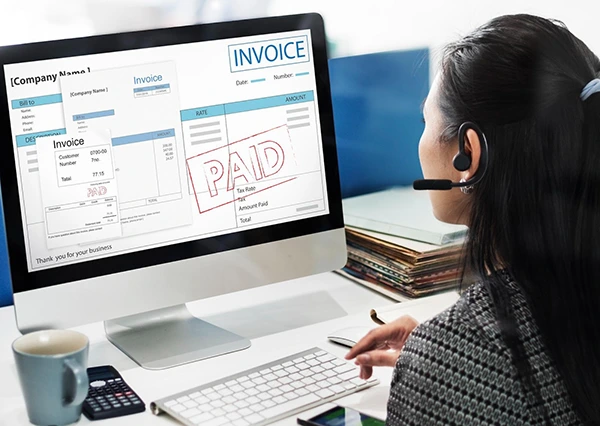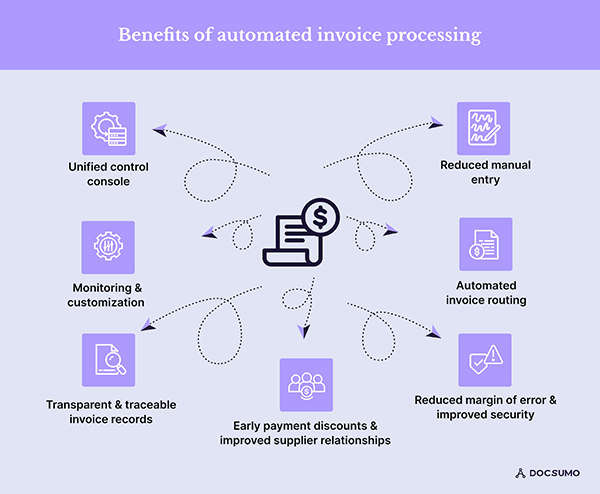How to Evaluate OCR Invoice Scanning Software: 5 Key Criteria That Matter

All the accounts payable processes are often bottlenecks for finance teams, but advancements in technology are providing powerful solutions. With the advent of AI-powered Optical Character Recognition (OCR) software, companies can now significantly reduce these costs and reclaim valuable time.
The right OCR invoice scanning software goes far beyond simple text recognition, using machine learning and natural language processing to intelligently extract, validate, and integrate crucial financial data.
This guide will provide a comprehensive look at the five key criteria—from data accuracy to security and scalability—that matter most when selecting an OCR invoice scanning solution to future-proof your accounts payable strategy.
Let’s start!
KEY TAKEAWAYS
- Choose an OCR tool with a proven, real-world accuracy rate of over 90%, especially for critical fields like amounts and invoice numbers.
- Modern OCR software uses AI, machine learning, and natural language processing to extract data with context, moving beyond simple text recognition.
- A high-quality solution must be able to capture detailed line-item information, including descriptions, quantities, and tax rates, for true automation.
- The best software can handle new vendor invoices and complex layouts without rigid templates and can learn from user corrections.
- The OCR tool should easily integrate with your existing ERP, accounting software, and approval workflows for a complete, end-to-end automation strategy.
- Ensure the software is secure and can handle significant spikes in invoice volume as your business grows.
Why OCR Invoice Scanning Requires More Than Basic Text Recognition
OCR (Optical Character Recognition) has been here for decades. However, conventional OCR struggles with low-quality scans, complex layouts, and multi-language documents—common issues in invoice processing.
Invoices are highly variable:
- Every vendor uses a distinctive format
- Some include line items in their tables, others don’t
- Fields like VAT ID, payment terms, and PO numbers must be identified in context
Pattern matching is just one feature of contemporary OCR invoice scanning software, such as Turbodoc.io’s. It extracts context-aware structured data using artificial intelligence (AI), machine learning, and natural language processing (NLP).
Data Extraction Accuracy: Don’t Settle for Less Than 90%
You’re back to manual verification if your OCR tool misreads invoice numbers or payment amounts. This creates danger and negates the goal of automation.
What to search For:
- Real-world accuracy reports (not just “AI-powered” claims)
- AI models trained specifically on financial documents
- Ability to handle line items, tax fields, currency symbols, and totals
Industry Insight:
According to a 2024 report by Forrester, OCR systems demonstrated 35% more field-level accuracy than generic document OCR solutions.
Line-Item Capture: It’s Not Optional Anymore
It is no longer sufficient to simply record the date and invoice total. To truly automate reconciliation and reporting, your OCR software must extract:
- Item descriptions
- Tax rates per item
- Quantity and unit price
- SKU or product codes
INTERESTING FACT
A study by the Institute of Finance & Management (IOFM) found that automated invoice processing can reduce the cost per invoice to as low as $3, compared to a manual processing cost of up to $16.

Template Flexibility & Self-Learning Capabilities
Unseen layouts may appear on invoices from new vendors. In case your OCR software depends on strong templates, onboarding new vendors can cause a bottleneck.
Ideal Features:
- Template-free or dynamic layout recognition
- AI that learns from corrections
- Support for low-quality scans or photos
Seamless Integration with Existing Systems
OCR is just one element of the automation puzzle. It needs to connect with you:
- ERP (SAP, Oracle, NetSuite)
- Accounting software (QuickBooks, Xero)
- Approval workflows (e.g., Slack, Microsoft Teams)
Integration Checklist:
- Open REST API or native integrations
- Support for export formats like JSON, XML, CSV
- Real-time sync capabilities
Scalability, Security, and Compliance
Don’t ignore operational requirements associated with scale or sensitive data handling:
Essential Competencies:
- Scalability: Can manage spikes in invoice volume (e.g., end-of-month or Q4 rush)
- Security: Encryption at rest and in transit, role-based access control
- Compliance: SOC 2, GDPR, ISO 27001, HIPAA (if applicable)
Bonus: Usability and Support Matter More Than You Think
Even the biggest and most powerful OCR system can fail if the user experience is a disappointment. Ask yourself:
- How simple is it to set up and start processing?
- Is there a sandbox or free trial?
- Do they offer responsive support (chat, email, onboarding assistance)?
Comparative Snapshot: Top OCR Invoice Scanning Tools (2025)
| Tool | Accuracy | Line-Item Support | AI Learning | Integrations | Security | Ease of Use |
|---|---|---|---|---|---|---|
| Rossum | ✅ 96% | ✅ Yes | ✅ Yes | ✅ Wide | ✅ Good | ⭐⭐⭐⭐ |
| Turbodoc.io | ✅ 95%+ | ✅ Yes | ✅ Self-learning | ✅ Native + API | ✅ Strong | ⭐⭐⭐⭐⭐ |
| ABBYY | ✅ 94% | ✅ Yes | ⚠️ Manual Tuning | ✅ Extensive | ✅ High | ⭐⭐⭐ |
| Nanonets | ✅ 91% | ✅ Yes | ✅ Yes | ✅ Good | ✅ Good | ⭐⭐⭐⭐ |
| Kofax | ✅ 93% | ✅ Yes | ⚠️ Template-Based | ✅ ERP-Ready | ✅ Strong | ⭐⭐ |
Final Thoughts: Choose Software That Grows With You
Consider the long term while assessing OCR invoice scanning software. A solution that works for you now should also change as your business expands and your processes get more intricate. Intelligence, accuracy, and integration are non-negotiables—but usability and support are equally important.
All the requirements are met by Turbodoc.io, which provides a strong, AI-powered platform that makes processing invoices easier for financial teams of any size. For any company wishing to update invoice management, it’s a strong option due to its robust features, simple setup, and reasonable cost.
Ans: Traditional OCR relies on pattern matching and struggles with complex layouts and low-quality scans. Modern, AI-powered OCR uses machine learning and NLP to understand the context of data, leading to higher accuracy and flexibility.
Ans: Capturing detailed line-item data is crucial for automating tasks like purchase order reconciliation and generating accurate financial reports, moving beyond basic payment processing.
Ans: Look for a solution with open APIs or native integrations for your specific ERP and accounting software, as well as support for common data formats like JSON or CSV.
Ans: The top OCR tools are Rossum, Turbodoc.io, ABBYY, Nanonets, and Kofax.
